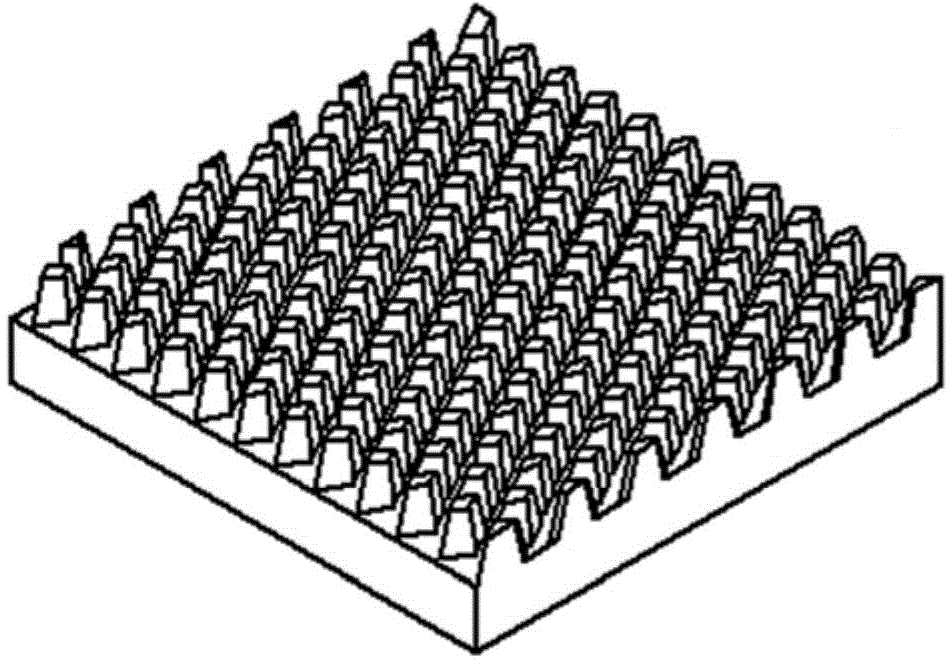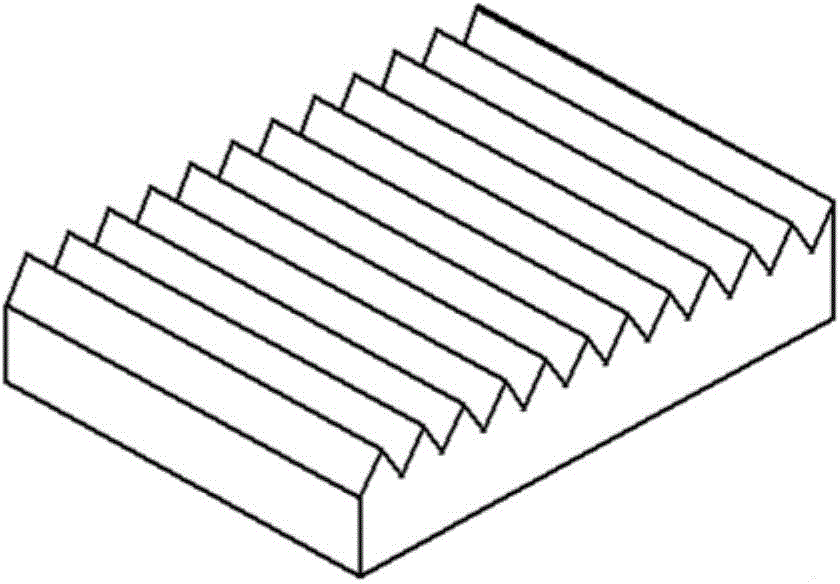Anti-slip tooth design applicable to high-hardness metal sectional material stretching and straightening
A technology of metal profiles and anti-slip teeth, which is applied in the design of anti-slip teeth on the jaws of stretching machines, and in the field of anti-slip teeth design, can solve problems such as too deep bite, inability to bite in, and broken ends, etc., to achieve moderate bite depth and avoid stress concentrated effect
- Summary
- Abstract
- Description
- Claims
- Application Information
AI Technical Summary
Problems solved by technology
Method used
Image
Examples
Embodiment 1
[0019] When stretching and straightening ultra-high-strength rare earth magnesium alloy extruded sheets, the convex nail type anti-skid teeth ( Figure 1(a) ) cannot avoid slipping, while the usual triangular-section straight teeth ( Figure 1(b) ) would cause broken ends, so the anti-skid teeth were redesigned. The size of the plate to be straightened is 300mm×25mm×10000mm. The parameters of the designed tooth shape are as follows: tooth height h=2mm, front bottom angle θ 1 = Rear base angle θ 2 =20°, the platform width between teeth w=5mm, the tooth profile is as follows image 3 shown. After the anti-skid teeth are processed, the surface layer of the jaw where the anti-skid teeth are located is quenched to improve its hardness and wear resistance. At the same time, remove the metal debris between the anti-slip teeth in time to avoid excessive accumulation of debris that will paste the anti-slip teeth and cause slippage.
[0020] practice shows that, image 3 The anti-...
Embodiment 2
[0022] When stretching and straightening the high-strength rare-earth magnesium alloy rectangular cross-section square bar with a specification of 210mm×95mm×14000mm, the usual anti-skid teeth cannot effectively avoid slipping and broken ends, so the anti-skid teeth were redesigned. The parameters of the designed tooth shape are as follows: tooth height h=5mm, front bottom angle θ 1 =30°, back bottom angle θ 2 =100°, the platform width between teeth w=0, the tooth profile is as follows Figure 4 shown. After the anti-skid teeth are processed, the surface layer of the jaw where the anti-skid teeth are located is quenched to improve its hardness and wear resistance. At the same time, remove the metal debris between the anti-slip teeth in time to avoid excessive accumulation of debris that will paste the anti-slip teeth and cause slippage.
[0023] After practice, Figure 4 The anti-skid teeth shown are effective in preventing slipping and end breaks.
PUM
| Property | Measurement | Unit |
|---|---|---|
| height | aaaaa | aaaaa |
| angle | aaaaa | aaaaa |
| angle | aaaaa | aaaaa |
Abstract
Description
Claims
Application Information
 Login to View More
Login to View More - R&D
- Intellectual Property
- Life Sciences
- Materials
- Tech Scout
- Unparalleled Data Quality
- Higher Quality Content
- 60% Fewer Hallucinations
Browse by: Latest US Patents, China's latest patents, Technical Efficacy Thesaurus, Application Domain, Technology Topic, Popular Technical Reports.
© 2025 PatSnap. All rights reserved.Legal|Privacy policy|Modern Slavery Act Transparency Statement|Sitemap|About US| Contact US: help@patsnap.com



